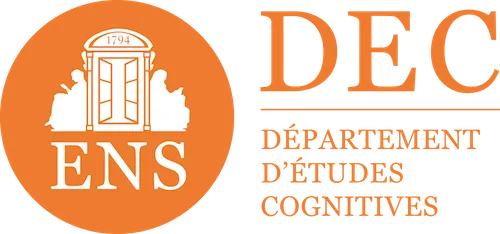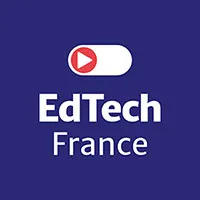

Flipped pedagogy: everything you need to know for training
What if learners discovered theoretical concepts before coming to the training course? This is precisely the principle of flipped pedagogy. In contrast to the traditional model, this method places learners at the center of the learning process, promoting engagement, autonomy, and practice.
Already widely used in education and science, flipped pedagogy finds its place in vocational training, in particular thanks to digital solutions such as the Didask LMS platform, its AI assistant and its functionalities of adaptive learning.
What is flipped learning?
Flipped pedagogy is a innovative teaching method that reverses the traditional classroom pattern. Instead of discovering key concepts in person with a trainer or teacher, learners start with study theoretical content independently, often at home or online, via video clips, digital documents or interactive resources.
Class time (or synchronous training) is then devoted to practical activities, collaborative exercises, group discussions or workshops to apply the knowledge acquired.
This pedagogical model focuses on active engagement of learners, who become actors in their own learning. It is transforming the role of the trainer, which is now more focused on coaching, coaching and problem solving, rather than on the simple transmission of knowledge. Thanks to this approach, The time in training becomes more interactive, more relevant and promotes better assimilation of skills.
The steps of a reverse sequence
A typical sequence in reverse pedagogy is divided into three stages:
- Remote preparation: learners access online content (videos, quizzes, documents) via an LMS platform.
- Class activities: in person or remotely, they work in groups, solve practical cases, discuss their difficulties.
- Reflective feedback and evaluation: a synthesis or self-assessment work makes it possible to anchor knowledge.
Implement flipped pedagogy in training
1. Integrate educational content effectively
It all starts with the design of theoretical supports. Thanks to a software tool author like the one offered by Didask, you can create interactive educational capsules, accessible at any time on the tool LMS.
These resources should be clear, structured, and engaging enough to motivate the learner to work independently at home.
2. Structuring dynamic classroom activities
Once the notions have been acquired beforehand, Class time is optimized to propose scenarios, role-playing games, collaborative projects or even co-development workshops.
This format reinforces operational skills and creates a more rewarding collective work dynamic than master classes.
3. Organize monitoring and evaluation
Didask's AI assistant allows you toadapt the course according to the level of each learner, while reporting tools facilitate personalized follow-up.
Quizzes, automatic feedback, and engagement indicators allow trainers toidentify the points of attention and to offer additional resources.
Advantages of flipped pedagogy in training
Increased motivation for learners
Because it empowers, flipped pedagogy reinforces personal involvement. The learner becomes an actor in his learning, develops her autonomy skills, and progresses at her own pace. He is no longer passive in the face of a downward trend, but active, committed, interacting with others.
Easy personalization of courses
Thanks to adaptive learning and Educational AI, flipped pedagogy makes it possible to individualize learning. Teachers and trainers can offer targeted resources as needed, while ensuring effective collective follow-up.
Better assimilation of knowledge
Theoretical learning is consolidated by the immediate implementation. By working on concepts from different angles (alone, in groups, in writing, speaking), students and professionals retain better, longer and with more meaning.
Techniques to boost flipped learning
The key role of interactive quizzes and forums
The online quizzes, accessible via the LMS tool, allow to Test your knowledge after each video clip. Discussion forums encourage exchanges between peers, thus strengthening the feeling of belonging to the group and the co-construction of knowledge.
Gamification as a lever for engagement
By integrating fun elements (badges, scores, challenges), reverse pedagogy brings greater motivation. These techniques reinforce attendance, especially among learners who are farthest from training or less accustomed to digital tools.
Microlearning to promote retention
The microlearning, or learning in very short formats, is particularly suited to flipped pedagogy. It consists in dividing the content into short teaching units (2 to 5 minutes), easy to consult at any time. This format favors a better memorization, allows maximum flexibility for learners.
How does Didask enrich the flipped learning experience?
Interactive courses based on cognitive science
Didask offers a pedagogical approach based on cognitive science, with a modular structure that facilitates the integration of content into inverted devices. The AI assistant supports trainers in the design of courses that respect the principles of educational effectiveness.
An authoring tool for creating reverse content
With sound Author tool, Didask allows trainers to easily create educational capsules, quizzes or practical exercises, in line with the educational objectives. This flexibility facilitates the implementation of flipped pedagogy, by giving teachers or trainers the means to quickly produce personalized content, adapted to the levels and needs of learners.
By rethinking the role of the teacher and the place of educational activities, the flipped pedagogy is disrupting traditional training practices. It transforms each sequence into a rich moment of exchanges, practice and the valorization of knowledge.
Thanks to the functions and tools offered by Didask (authoring tool, AI assistant, training catalog, an intelligent LMS tool), it becomes simple and fast to implement efficient and scalable inverted devices.
Make an appointment directly with our eLearning experts for a demo or simply more information.












